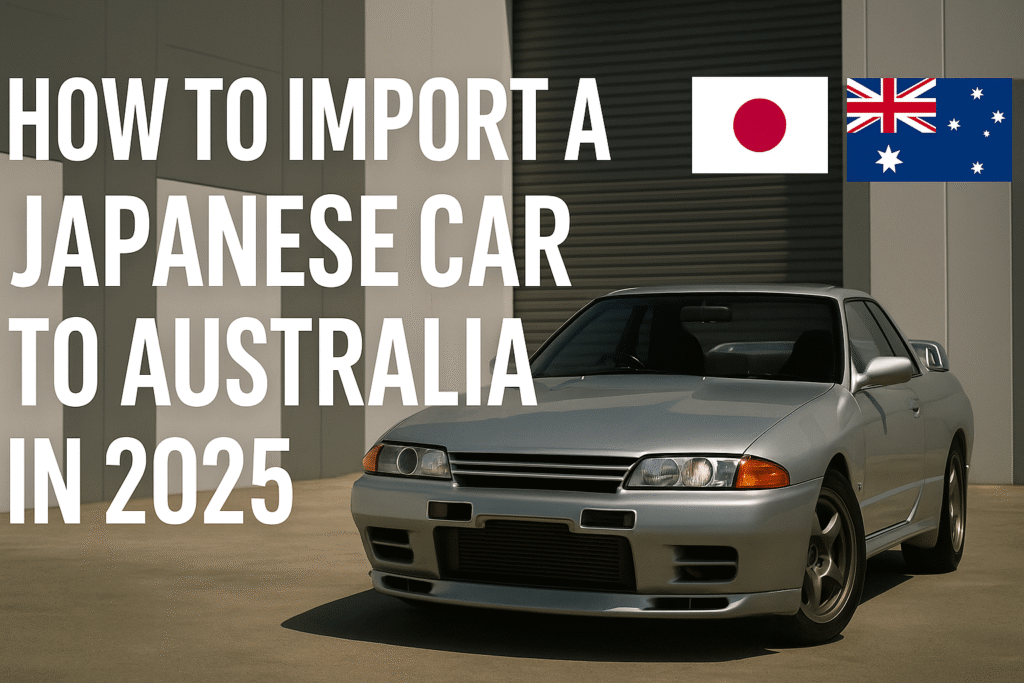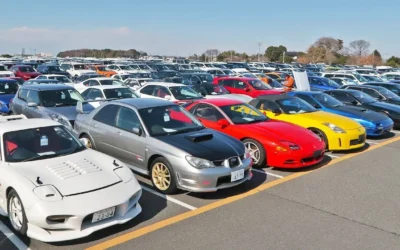
If you’ve ever dreamed of owning a Japanese import car — something unique, powerful, and built with Japanese precision — you’re definitely not alone.
Across Australia, car lovers are going crazy for JDM (Japanese Domestic Market) cars. From the legendary Nissan Skyline GTR to the ever-reliable Toyota Prius, these cars deliver quality, performance, and value that’s hard to find in the local market.
But here’s the real question:
How do you actually import a car from Japan to Australia — without losing your mind (or your money)?
Let’s break it all down — step by step — so you can confidently bring your dream JDM car home.
🇯🇵 Why Australians Love Importing Cars from Japan
Let’s be honest — Japanese cars are in a league of their own.
They’re built with care, designed with purpose, and maintained to incredibly high standards. That’s why even used Japanese cars often feel brand new.
Here’s why more Australians are importing cars straight from Japan instead of buying locally:
- Unmatched reliability: Japanese cars last decades with proper care.
- Unique models: Many JDM cars were never sold in Australia — which means you’ll own something truly special.
- Better pricing: Even after shipping and compliance, imports often cost less than similar cars in Australia.
- Hybrid and electric options: Japan leads the world in hybrid tech — perfect for drivers who want power and efficiency.
🧭 How to Import a Japanese Car to Australia (Step-by-Step)
- Check if the Car Is Eligible
Before falling in love with a car, make sure it can legally be imported into Australia.
There are three main pathways:
- SEVS (Specialist and Enthusiast Vehicle Scheme) – for rare or performance cars.
- 25-Year Rule – for classic JDM models that are at least 25 years old.
- Personal Import Scheme – if you’ve owned the car overseas and are moving to Australia.
You can check the SEVS list online to confirm your car’s eligibility.
- Work with a Trusted Japanese Car Importer
This is where things get easier.
A professional Japanese car import service in Australia will take care of everything — from auction bidding in Japan to shipping and compliance once the car arrives.
They’ll handle:
- Finding and verifying the car
- Translating and checking the auction sheet
- Shipping and customs paperwork
- Compliance inspection in Australia
Basically, they do the heavy lifting while you focus on choosing your dream car.
- Choose and Bid in Japanese Car Auctions
Japan’s car auctions are where the real magic happens.
You’ll find thousands of used Japanese cars for sale every week — from Toyota, Nissan, Mazda, Honda, and more.
With your importer’s help, you can see the auction sheet, check the car’s grade, mileage, and condition, and even view photos before bidding.
It’s transparent, safe, and often much cheaper than buying locally.
- Shipping and Vehicle Import Approval
Once your bid wins, your importer applies for a Vehicle Import Approval (VIA) — a must before shipping the car to Australia.
Cars usually arrive in 4–6 weeks, depending on the port (Sydney, Melbourne, or Brisbane).
You can ship via:
- RoRo (Roll-on/Roll-off): more affordable
- Container shipping: more secure
Your importer will guide you on which option suits your car and budget.
- Compliance and Registration in Australia
After your car lands, it needs to meet Australian Design Rules (ADR) before you can register it.
This includes:
- Emission and safety checks
- Odometer verification
- Seatbelt and light testing
Once it passes, you’ll get the green light to register your imported car and finally drive it home.
💰 What Does It Cost to Import a Car from Japan?
Here’s a quick look at typical JDM import costs for Australia (in AUD):
| Item | Estimated Cost |
| Vehicle Purchase | $8,000 – $40,000+ |
| Shipping (RoRo or Container) | $1,200 – $2,500 |
| Import Approval & Customs | $1,000 – $2,000 |
| Compliance & Registration | $2,000 – $4,000 |
| Total | $12,000 – $45,000+ |
💡 Tip: Go for cars with auction grades of 4 or higher — they’re cleaner, more reliable, and often hold value better in Australia.
🚘 Most Popular Japanese Cars Australians Are Importing in 2025
| Type | Popular Models |
| Performance / JDM | Nissan Skyline R34, Toyota Supra, Mazda RX-7 |
| Hybrid Cars | Toyota Prius, Honda Fit Hybrid, Nissan Note e-Power |
| Classic (25-Year Rule) | Nissan Silvia S13, Toyota MR2, Subaru Legacy GT |
| Compact / Daily Use | Suzuki Swift, Mazda Demio, Toyota Vitz |
From performance beasts to eco-friendly hybrids — there’s a Japanese import for everyone.
📦 What You’ll Need
Make sure you have these documents ready:
- Vehicle purchase invoice
- Auction sheet (for verification)
- Export certificate from Japan
- Vehicle Import Approval (VIA)
- Bill of lading from the shipping company
🌍 Tips for a Smooth JDM Import Experience
✅ Always verify the auction sheet — it’s your best protection from fraud.
✅ Choose a registered importer with proven experience in Japan-Australia logistics.
✅ Compare shipping and insurance options before finalizing.
✅ If possible, pick cars already approved under SEVS or the 25-year rule.
🏁 Final Thoughts
Importing a car from Japan to Australia isn’t as complicated as it sounds — especially when you have the right people guiding you.
With a trustworthy importer, clear communication, and a bit of patience, you can own a piece of Japanese engineering that turns heads every time you drive it.
Whether you’re after a classic Skyline, a hybrid Prius, or a rare JDM gem, importing directly from Japan could be the smartest move you make this year.
👉 Ready to start your import journey?
Let’s help you find, buy, and import your dream Japanese car — safely, affordably, and hassle-free.


